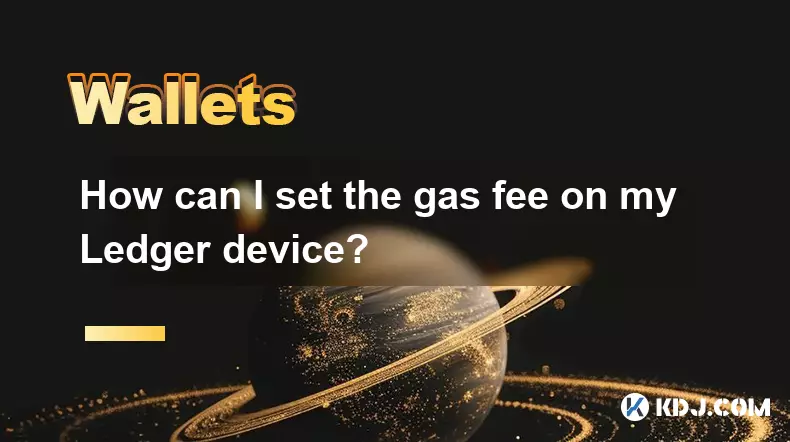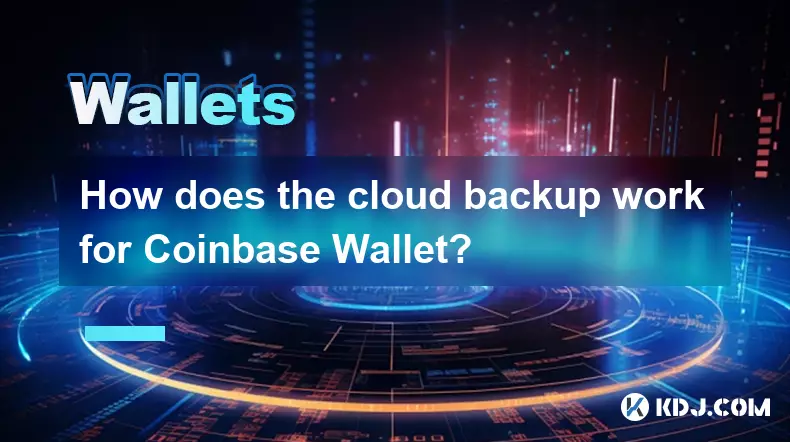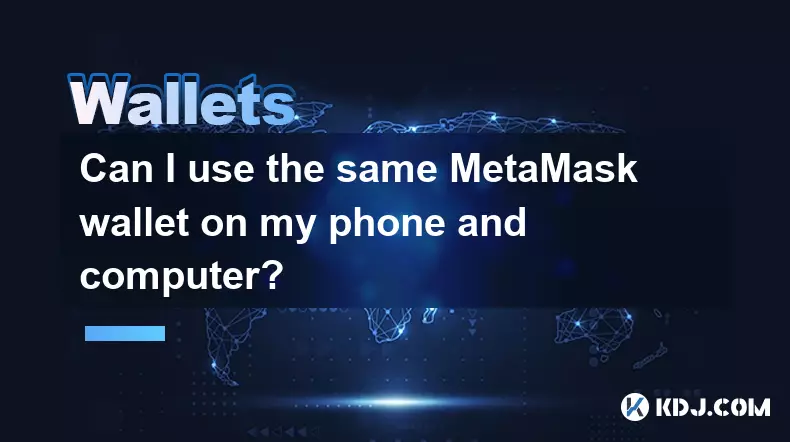-
 bitcoin
bitcoin $114779.865156 USD
2.30% -
 ethereum
ethereum $4226.519789 USD
2.39% -
 tether
tether $1.000545 USD
0.04% -
 xrp
xrp $2.890223 USD
0.92% -
 bnb
bnb $1030.029301 USD
2.95% -
 solana
solana $212.824944 USD
1.69% -
 usd-coin
usd-coin $0.999757 USD
0.01% -
 dogecoin
dogecoin $0.234961 USD
-0.27% -
 tron
tron $0.337174 USD
0.42% -
 cardano
cardano $0.804783 USD
0.09% -
 hyperliquid
hyperliquid $45.748770 USD
-2.85% -
 chainlink
chainlink $21.699170 USD
0.82% -
 ethena-usde
ethena-usde $1.001452 USD
0.08% -
 avalanche
avalanche $30.237800 USD
1.14% -
 stellar
stellar $0.372604 USD
1.52%
How can I set the gas fee on my Ledger device?
Gas fees on Ethereum compensate miners for processing transactions, and when using a Ledger device, always verify gas settings in your wallet—like MetaMask—and confirm the final values on your Ledger’s screen to avoid errors or overpaying.
Sep 30, 2025 at 06:54 am

Understanding Gas Fees in the Cryptocurrency Ecosystem
1. Gas fees are essential components of blockchain transactions, particularly on networks like Ethereum. These fees compensate validators or miners for processing and confirming transactions. Every action on a blockchain, from transferring tokens to interacting with smart contracts, requires computational resources. The network quantifies this resource usage in gas units.
2. The total cost of a transaction depends on two variables: the gas limit and the gas price. The gas limit refers to the maximum amount of gas a user is willing to spend on a transaction. The gas price, usually denominated in gwei, reflects how much the user pays per unit of gas. Multiplying these values gives the total transaction fee.
3. Market demand heavily influences gas prices. During periods of high congestion, users often increase their gas prices to prioritize their transactions. This competitive environment means setting an appropriate gas fee is crucial for timely confirmations without overpaying.
4. Wallets connected to hardware devices like Ledger typically manage gas settings through integrated interfaces. Users must understand how to adjust these parameters manually when necessary. Misconfigured gas settings can lead to failed transactions or unnecessarily high costs.
5. Ledger devices themselves do not process gas fees directly; instead, they rely on compatible software wallets such as MetaMask or Ledger Live to define and sign transaction parameters, including gas configurations.
Configuring Gas Fees Through Ledger-Compatible Wallets
1. To set gas fees using a Ledger device, connect it to a supported wallet interface. For Ethereum-based transactions, MetaMask is commonly used. After connecting the Ledger via USB and opening the appropriate app (e.g., Ethereum), navigate to the transaction screen within MetaMask.
2. When initiating a transaction, click on the “Edit” option next to the suggested fee. This reveals advanced settings where users can modify both the gas limit and gas price. Some interfaces offer presets like “Low,” “Medium,” and “High,” which automatically adjust fees based on current network conditions.
3. Manual adjustments allow greater control. Users can input custom values for gas price and limit depending on urgency and budget. It's important to ensure that the gas limit isn’t set too low, as insufficient gas causes transaction failure while still consuming fees.
4. Once configured, the transaction details are sent to the Ledger device for review. The device displays the gas price, gas limit, and total fee before approval. Confirming these values on the physical screen ensures no tampering has occurred during transmission.
5. Always verify the exact fee amount displayed on the Ledger’s secure screen before approving any transaction, as this step protects against potential phishing attempts or malware altering transaction details.
Best Practices for Managing Transaction Costs
1. Monitoring real-time gas tracking tools helps determine optimal times to transact. Websites like Etherscan’s Gas Tracker or GasNow provide up-to-date insights into average, fast, and safe-low gas prices across the Ethereum network.
2. Scheduling non-urgent transactions during off-peak hours often results in significantly lower fees. Network activity tends to decrease during weekends or outside major financial market operating times.
3. Utilizing layer-2 solutions or alternative blockchains with lower congestion can reduce reliance on high-fee mainnets. Assets bridged to networks like Polygon or Arbitrum maintain functionality while minimizing transaction costs.
4. Regularly updating Ledger firmware and associated applications prevents compatibility issues that might interfere with proper gas calculation or transaction signing.
5. Avoid blindly accepting default gas suggestions in wallets—taking a moment to analyze current network conditions empowers users to make cost-effective decisions without compromising security.
Frequently Asked Questions
Can I change the gas fee after sending a transaction?No, once a transaction is broadcasted to the network, its gas fee cannot be altered. However, some wallets support replacing a pending transaction with a new one at a higher gas price, effectively canceling the original.
Why does my Ledger show a different gas fee than my wallet interface?Discrepancies may arise if the wallet sends altered data. Always cross-check the gas price, gas limit, and total fee on the Ledger’s display. The device shows the actual values being signed, ensuring transparency and security.
Do all cryptocurrencies require gas fees when used with Ledger?Not all do. Gas fees primarily apply to blockchain networks that use them for computation, such as Ethereum and Binance Smart Chain. Other coins like Bitcoin operate under different fee models based on transaction size rather than computational complexity.
Is it safe to set very low gas fees to save money?Setting extremely low fees risks prolonged confirmation times or outright rejection by miners. Transactions may remain stuck indefinitely, especially during peak usage. Balancing cost and timeliness is key to efficient blockchain interaction.
Disclaimer:info@kdj.com
The information provided is not trading advice. kdj.com does not assume any responsibility for any investments made based on the information provided in this article. Cryptocurrencies are highly volatile and it is highly recommended that you invest with caution after thorough research!
If you believe that the content used on this website infringes your copyright, please contact us immediately (info@kdj.com) and we will delete it promptly.
- The Spanish Silver Dollar: A Global Currency Through History
- 2025-09-30 14:25:15
- SEC, Crypto, and Regulation: Navigating the Shifting Sands of Digital Finance
- 2025-09-30 14:25:15
- Government Grift, Congress, and ETF Tracking: Is This the Future of Investing?
- 2025-09-30 14:30:01
- CoinShares' Market Metrics: Bitcoin's Calm Amidst Fed Rate Tweaks
- 2025-09-30 14:30:01
- Nonprofit RFI Launches: Bridging Traditional and Decentralized Financial Systems
- 2025-09-30 14:30:01
- Emilio Lozoya's audience: REAL-TEME UPDATES VIA WHASTASP?
- 2025-09-30 14:30:15
Related knowledge

How does the cloud backup work for Coinbase Wallet?
Sep 30,2025 at 02:54pm
Understanding Cloud Backup in Coinbase Wallet1. Coinbase Wallet does not use traditional cloud backup methods to store users’ private keys or seed phr...

Can I use the same MetaMask wallet on my phone and computer?
Sep 30,2025 at 01:37pm
Using MetaMask Across Multiple Devices1. Yes, you can use the same MetaMask wallet on both your phone and computer by restoring it with the same secre...

How to see my NFTs in my MetaMask wallet?
Sep 30,2025 at 01:19pm
Accessing Your NFTs Through MetaMask1. Open the MetaMask wallet application on your mobile device or browser extension. Ensure you are logged into the...

How to import a wallet using a private key in MetaMask?
Sep 30,2025 at 12:54pm
Understanding Private Key Wallet Import in MetaMask1. Open the MetaMask browser extension or mobile app and ensure you are logged out of any active wa...

How do I view smart contract interaction history in Coinbase Wallet?
Sep 24,2025 at 01:36am
Accessing Smart Contract Interaction History in Coinbase Wallet1. Open the Coinbase Wallet application on your mobile device and log in using your cre...

How do I use the token swap feature in Coinbase Wallet?
Sep 24,2025 at 05:00pm
Understanding Token Swaps in Coinbase Wallet1. The token swap feature in Coinbase Wallet enables users to exchange one cryptocurrency for another dire...

How does the cloud backup work for Coinbase Wallet?
Sep 30,2025 at 02:54pm
Understanding Cloud Backup in Coinbase Wallet1. Coinbase Wallet does not use traditional cloud backup methods to store users’ private keys or seed phr...

Can I use the same MetaMask wallet on my phone and computer?
Sep 30,2025 at 01:37pm
Using MetaMask Across Multiple Devices1. Yes, you can use the same MetaMask wallet on both your phone and computer by restoring it with the same secre...

How to see my NFTs in my MetaMask wallet?
Sep 30,2025 at 01:19pm
Accessing Your NFTs Through MetaMask1. Open the MetaMask wallet application on your mobile device or browser extension. Ensure you are logged into the...

How to import a wallet using a private key in MetaMask?
Sep 30,2025 at 12:54pm
Understanding Private Key Wallet Import in MetaMask1. Open the MetaMask browser extension or mobile app and ensure you are logged out of any active wa...

How do I view smart contract interaction history in Coinbase Wallet?
Sep 24,2025 at 01:36am
Accessing Smart Contract Interaction History in Coinbase Wallet1. Open the Coinbase Wallet application on your mobile device and log in using your cre...

How do I use the token swap feature in Coinbase Wallet?
Sep 24,2025 at 05:00pm
Understanding Token Swaps in Coinbase Wallet1. The token swap feature in Coinbase Wallet enables users to exchange one cryptocurrency for another dire...
See all articles










































































